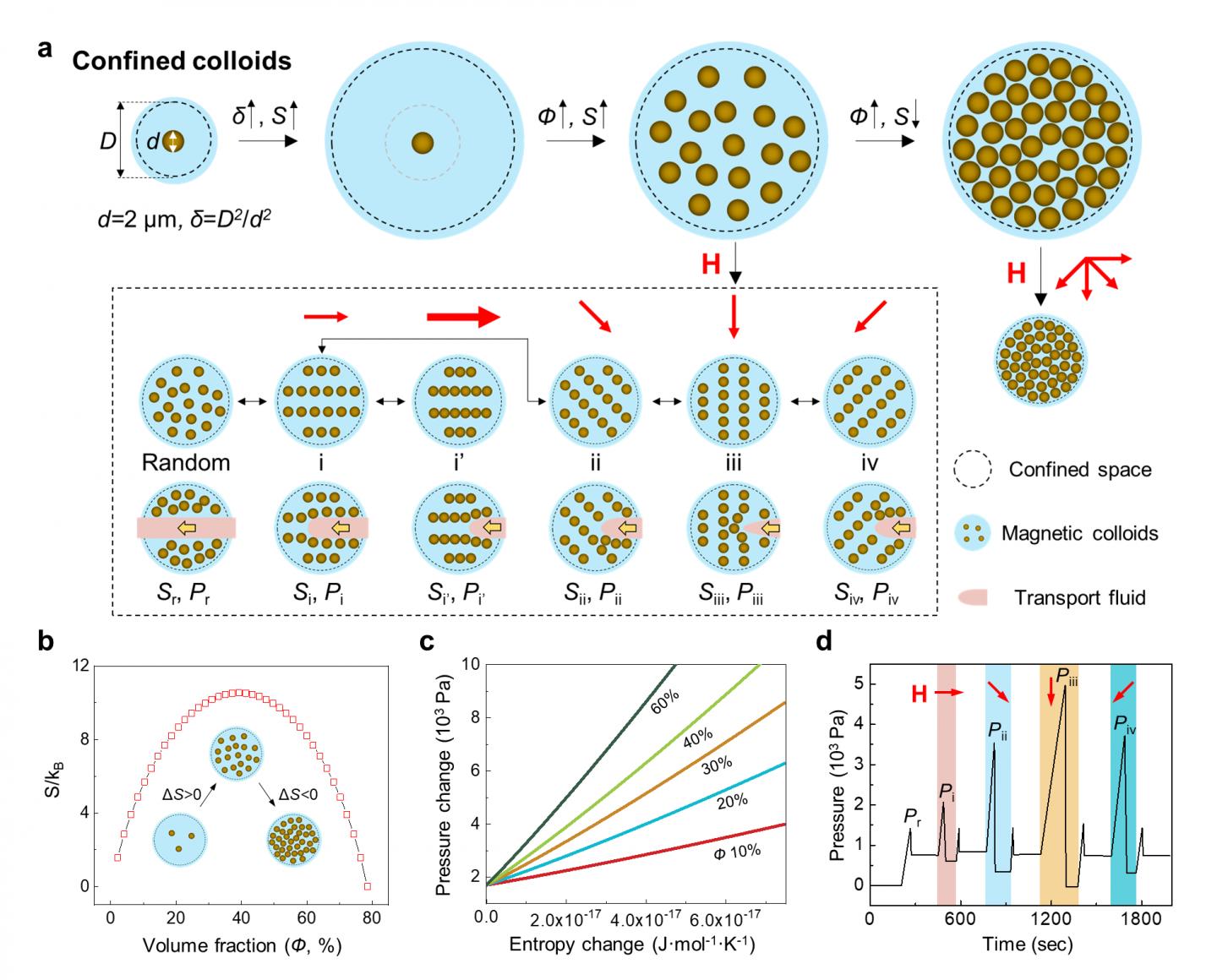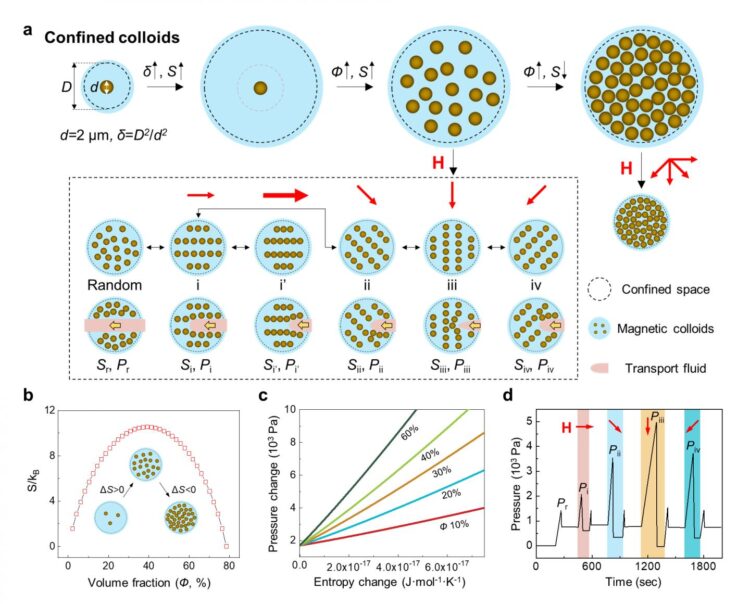
Credit: ©Science China Press
Colloidal suspensions of microscopic particles show complex and interesting collective behaviors. In particular, the collective dynamics of colloids is fundamental and ubiquitous for materials assembly, robotic motion, microfluidic control, and in several biological scenarios. The collective dynamics of confined colloids can be completely different from that of free colloids: for instance, confined colloids can self-organize into vortex structures, coherent motion, or different phase behaviors. On one hand, due to the complexity of colloidal suspensions, how to finely tune the collective dynamics of confined colloids remains elusive. On the other hand, since the microscale confinement is on the same length scale as the colloidal size, it is difficult to determine how the colloids interplay with each other and the geometrical constraints.
To study the colloidal collective in confinements, prior work has been focused on the microscopic visualization and simulation method, lacking direct evidence to characterize the mechanical property of colloidal interaction. Can this mechanical property be probed in a direct way or expressed as feedback of force in real-time? With the help of liquid gating technology, the answer could be yes. The leading research field “Liquid gating technology” was selected as the “2020 Top Ten Emerging Technologies In Chemistry” announced by International Union of Pure and Applied Chemistry (IUPAC). Liquid gating technology allows certain liquids to selectively open and close pores on-demand. Especially, liquid gating membranes can respond to pressure changes, which also indicate transmembrane fluid transport capability. Therefore, utilizing the pressure-driven intrusion fluids as efficient causes, the mechanics of the confined colloids can be determined in real-time. In a new research article published in the Beijing-based National Science Review, scientists at Xiamen University present a new paradigm of the liquid gating system that confines the magnetic colloidal suspension in a porous matrix. This confined magnetic colloid system (CMCS) can probe the mechanical properties of the colloidal suspension in real-time, showing the ability to allow or stop the microscale flow or dynamically manipulate the fluid transport.
Interestingly, it seems that “freedom is not free”. Firstly, the colloidal suspensions are trapped by the porous matrix. However, the confined colloids are also free in their limited space because their collective dynamics is vastly controllable via the magnetic field. The collective configuration of the confined colloids is statistically and thermodynamically characterized by the colloidal entropy. Meanwhile, the interplay between the confined colloids and the interplay between the colloidal suspension and geometrical constraints are simultaneously indicated by the pressure value. Notably, the pressure change is in a linear relationship with the entropy change. Both of them are prominently affected by the geometrical constraints, packing fraction of colloids, and the strengths and directions of magnetic fields. Moreover, as a proof of concept, this system has been demonstrated for the applications of dynamic and preprogrammed fluid transport, remote drug release, microfluidic logic, and chemical reaction, enabling sustainable antifouling behavior.
Beyond the magnetic field, the reported strategy of entropy regulation of confined colloids is also applicable to other remote external stimuli, such as acoustic field, light field, electric field, and so on. This work would enlighten the exploitation for fundamental research of colloidal science, and applications ranging from fluid transport, multiphase separation, logic microfluidics, to programmable cargo transport. The findings described here would also deepen the understanding of phenomena such as swarm intelligence, cellular collective, pollutant treatment by granular particles, and stop-and-go in traffic jamming.
###
This research received funding from the National Key R&D Program of China, the National Natural Science Foundation of China, the Overseas Expertise Introduction Project for Discipline Innovation, the Fundamental Research Funds for the Central Universities, the Natural Science Foundation of Fujian Province of China, CAS Key Laboratory of Bio-inspired Materials and Interfacial Science, Technical Institute of Physics and Chemistry, Chinese Academy of Sciences, and Natural Sciences and Engineering Research Council of Canada.
See the article:
Zhizhi Sheng, Mengchuang Zhang, Jing Liu, Paolo Malgaretti, Jianyu Li, Shuli Wang, Wei Lv, Rongrong Zhang, Yi Fan, Yunmao Zhang, Xinyu Chen and Xu Hou
Reconfiguring confined magnetic colloids with tunable fluid transport behavior
Natl Sci Rev, DOI: 10.1093/nsr/nwaa301
https:/
The National Science Review is the first comprehensive scholarly journal released in English in China that is aimed at linking the country’s rapidly advancing community of scientists with the global frontiers of science and technology. The journal also aims to shine a worldwide spotlight on scientific research advances across China.
Media Contact
Xu Hou
[email protected]
Related Journal Article
http://dx.





